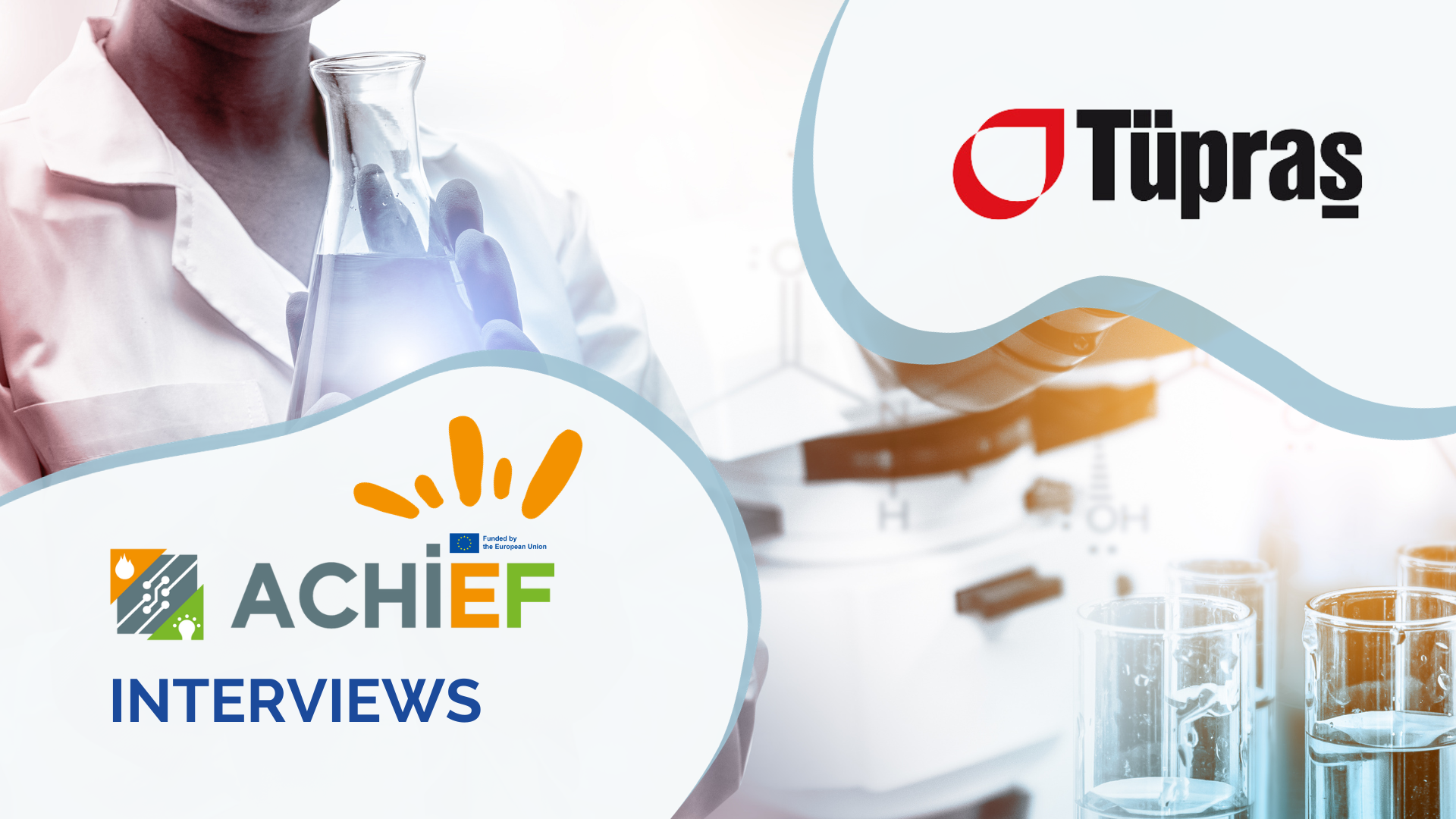![]() 03/01/2024
03/01/2024
Redefining success: Conversations with TUPRAS
Why did you join the ACHIEF project and what’s your role?
TÜPRAŞ joined the project primarily to enhance the operational lifespan of equipment, particularly pipelines and sub-components exposed to highly aggressive corrosion environments by applying Polymer Derived Ceramic (PDC) coating and the embedded Electrochemical Impedance Spectroscopy (EIS) sensor system for online corrosion monitoring. Moreover, the adoption of technologies developed within the project has reduced the frequency of pipeline replacements, thereby extending maintenance intervals. This integration will save cost production, reduce energy consumption, and mitigate risks associated with process safety concerns.
TÜPRAŞ plays a pivotal role as an end-user and refinery use-case provider in the ACHIEF Project. Its responsibility involves showcasing the Polymer Derived Ceramic (PDC) coating developed by CEA under actual refinery conditions. Pilot testing of this coating integrated with the EIS corrosion sensors developed by AIMEN will be carried out in real refinery environment. TUPRAS has contributed by providing essential process conditions and played a crucial role in designing the new technologies developed by CEA and AIMEN.
How is TÜPRAŞ contributing to reduce their environmental footprint and enhance the circular nature of their processes?
The main objective of this case is to increase the lifespan of the equipment by at least 20% in comparison with the current solution with the aim of increasing the replacing frequency of the pipelines and the maintenance interval (12 months). It will save cost production and energy consumption and decrease the risk on the process safety issues. In addition, indirect CO2 emissions from steel production will be significantly reduced by replacing a fewer number of steel-based pipes after the installation of the PDC coating embedded EIS sensor.
When all impacts are collectively evaluated in conjunction with the increased energy efficiency, the results of the ACHIEF project will notably enhance the environmental footprint within the oil&gas refining industry, consequently advancing overall circularity.
How is TÜPRAŞ going to demonstrate the new materials developed by the ACHIEF project?
The potential corrosive environments at TÜPRAŞ refineries were analysed, focusing on an area where corrosion is most critical. Following the application of the PDC material developed within the project, a standard three-electrode electrochemical cell configurated EIS sensor system developed within the project’s scope, will be deployed to monitor both the effectiveness of the PDC coating and the severity of corrosion within the pipeline.
How would you explain to a wider public what will be the impact of the ACHIEF project to energy intensive industries such as TÜPRAŞ ?
For all coating materials, scaling up and complex shapes are important challenges to overcome. In addition, when this newly developed PDC coating shows successful performance by being tested in such an aggressive non-uniform corrosion environment containing concentrated and localized Cl ions, with a pH below 1, it will signal that it will perform successfully in many different corrosive environments.
Corrosion monitoring systems are quite common and critical for energy-intensive industries such as TÜPRAŞ. The most common method of monitoring corrosion is thickness measurement. Unfortunately, this method does not perform well in non-uniform types of corrosion. However, non-uniform corrosion types are also frequently encountered in energy-intensive industries, and the solution is generally to replace the part when it becomes unusable. The developed EIS sensor can measure even non-uniform corrosion. Also, there are many safety points to consider when designing a sensor system for processes involving flammable and corrosive environments. Being able to convert the design according to these types of requirements is critically important for energy intensive industries.
How do you see the future of the ACHIEF project?
The ACHIEF project presents a comprehensive and innovative approach to the challenges of extreme and fluctuating oil&gas refinery conditions. Looking into the future, the project’s outcomes could lead to widespread adoption of these novel coatings and their production technologies across various industrial sectors. Industries may experience increased productivity, reduced maintenance costs, and a significant decrease in their environmental footprint. In summary, the ACHIEF project, with its cutting-edge technologies such as PDC coatings, and EIS sensor, has the potential to transform energy intensive industries, making them more energy efficient, environmentally friendly, and economically sustainable in the years to come.




